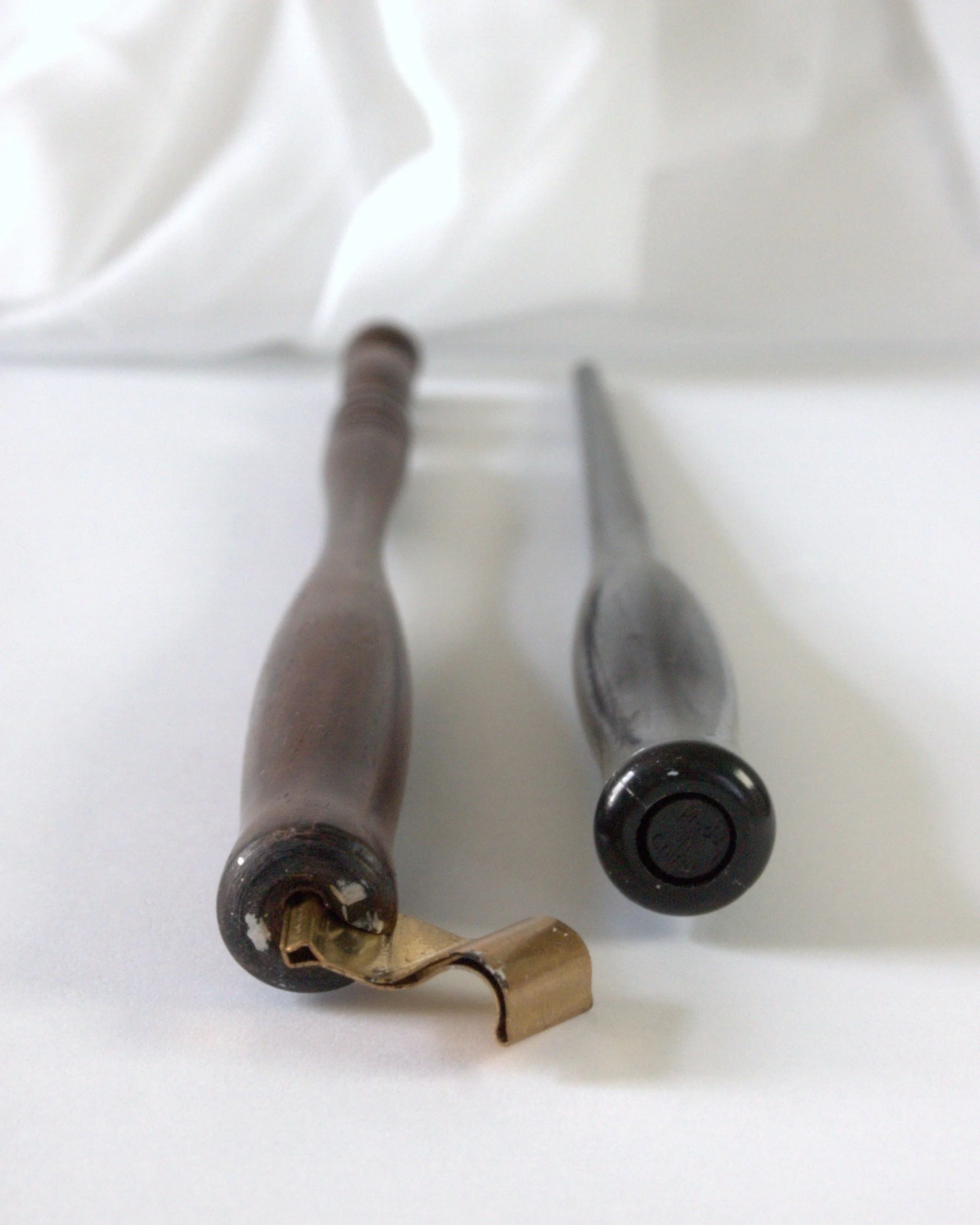Terminology
This may not be the most exciting topic of all time, but I feel that this is important in your calligraphy journey! By understanding these terms and definitions moving forward you will be able to understand what calligraphers are talking about! Let’s jump right in.
Nibs
A nib is the metal tip that holds the ink and allows your pen to write calligraphy. The vent is a hole in the nib that creates a surface tension for the ink to be held while you write. From the vent to the tip of a nib is a line breaking the nib’s point in two - these separate pieces of metal on the tip are called tines. Ink travels through these tines to the tip and is how the ink is able to get to paper in the way you want to write. When pressure is applied to the nib, the tines open up and allow more ink to flow giving that contrasting thick-to-thin lines distinctive of calligraphy.
Pen Holder
This is the pen stem that holds the nib and allows you to write with different nibs. These come in two styles: straight and oblique. A straight pen holder is like what you would write with using a ballpoint pen, the pen is straight and the nib sits center with the pen holder.
Qblique vs Straight
Oblique refers to a style of pen holder where the nib sits off to the side of the pen’s stem whereas in a straight holder the nib aligns with the pen itself. The pen holder itself is straight but the nib sits to the side in what is called a flange.
Flange
A flange is a thin piece of metal formed to hold a standard set of nibs. Most flanges have standard sizes that are used for common nibs like the Nikko G or the Blue Pumpkin nibs. Other nibs are thinner in width and have a much tighter curvature. For those nibs, a custom-fitting flange works best. These are usually tension set where you have an adjustable knob that tightens to the width of your nib.
Exemplars
Exemplars are examples of different scripts such as Copperplate, Spencerian, Round Hand, etc. that showcase the alphabet in upper and/or lowercase. Some will also include numbers to be sure you have a well-rounded exemplar, very useful when writing envelopes.
Scripts/
Hands
These are the different styles of calligraphy. What you would call a “font” in Microsoft Word, we call “Scripts” or “Hands” in the calligraphy world. Copperplate & Spencerian are two examples of different scripts, both traditional calligraphy scripts that each have their own set of rules. Copperplate is based on an oval shape whereas Spencerian is based on a “v” shape.
Did I miss anything? Probably, but this should be a good starter guide of the basics of calligraphy in order to get you started on your journey! Happy writing friends!




